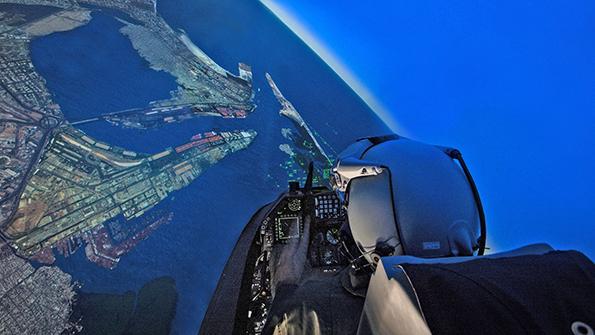
The Western aerospace and defense industry faces huge challenges that require major investments. From the embattled restart of the Boeing 737 MAX, including the shrinking supply chain, to monstrous debt loads taken on during the COVID-19 pandemic to the need to out-innovate China in advanced technology and weaponry, the list of spending demands grows.
Fortunately for shareholders, they will all come in second place, at least. Indeed, if the first quarter of this year is any indication, aerospace and defense (A&D) is about to throttle up share buybacks and dividend payments into afterburner.
Publicly traded A&D companies’ share repurchases in the first quarter of 2021 hit almost $5 billion—more than the $4.7 billion for all of 2020. Defense-oriented companies led the way in the latest surge, starting with Raytheon Technologies and L3Harris Technologies, according to a May report by Morgan Stanley analysts.
To be fair, A&D shareholder returns are coming off a historic nadir due to the pandemic, so perhaps the only realistic trend to expect would be for greater returns. The $4.7 billion last year was 50% lower than in 2019 and was down 250%, 228% and 195% against 2018, 2017 and 2016, respectively. The decline in share repurchases was largely driven by the aerospace side, and Boeing’s absence since its 2019 repurchase suspension has been particularly glaring. The Chicago OEM and defense prime accounted for 51%, 60%, 55%, 38% and 0% of total share repurchases annually across 2016-20, the report notes.
But A&D companies, and especially defense-related corporations, are expected to ramp up share returns this year. Analysts such as Kristine Liwag and Matthew Sharpe at Morgan Stanley measure their potential by calculating the remainder of board-authorized share-repurchase programs as a percentage of a company’s overall market capitalization. Lockheed Martin and General Dynamics, for instance, both bought back “sizable” amounts of outstanding shares last year, $1 billion and $759 million, respectively. But the remainder they have left on their programs is “only” 2% and 3%, and the analysts are watching for new board authorizations.
By comparison, Raytheon has 4% left on its program, Northrop Grumman, 8%, and L3, 13%. They are Wall Street darlings lately in part due to their relatively aggressive share-buyback programs, much of which is fueled by asset selloffs. Then there is CACI International, which in March announced a $500 million buyback program—modest by defense prime comparisons but noteworthy because former leader Jack London eschewed buybacks. He died in January.
Capital Alpha Partners Managing Director Byron Callan, who is routinely followed by other A&D analysts and consultants, understands the reasons behind buybacks, but he still is not a fan of habitual upswings. Yes, buybacks cut outstanding share counts and, as famed investor Warren Buffett has noted, increase the percentage of ownership by existing shareholders. They also increase earnings per share, or at least offset dilution from equity incentives paid to managers, and might marginally impact cash flow by reducing dividends paid.
“But it is debatable if buybacks are less risky than other uses of cash for internal investment or mergers and acquisitions,” Callan told readers of his client notes in March. “There are plenty of examples of companies that habitually repurchased their stock at far higher prices and that were overtaken by new competitors or ‘unexpected’ events like a global pandemic.”
In general, U.S. A&D companies continue lobbying U.S., state and local officials for more support, including tax code relief that is important to the top tiers, and more Treasury Department aid for suppliers and aerospace workforces. In a way, that is just more of the same of a long-running effort to socialize business risk with the public that predated the pandemic. But A&D companies are also cutting workforces and closing offices and factories while reducing investment spending from already low levels, except for factory automation and other human-replacement technologies.
Only shareholder returns appear to be growing. Is this good for A&D? Is it good for America?






Comments
Yes, it means higher share prices in the short term but at the cost of not having cash on hand to weather crises (Covid anyone?) and reduces internal R&D spending, making the companies less competitive down the road.
I know you can't legislate maintaining cash reserves and R&D spending, but I would have thought the companies' executives along with their shareholders would demand more progressive business practices now.